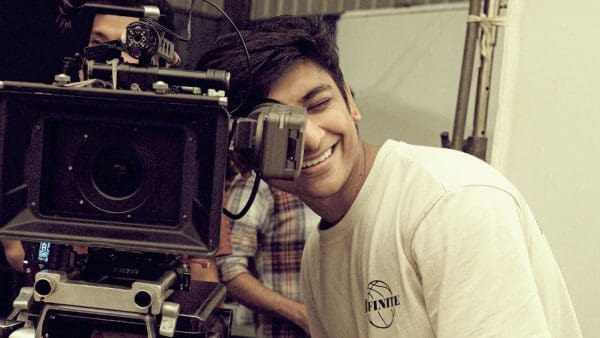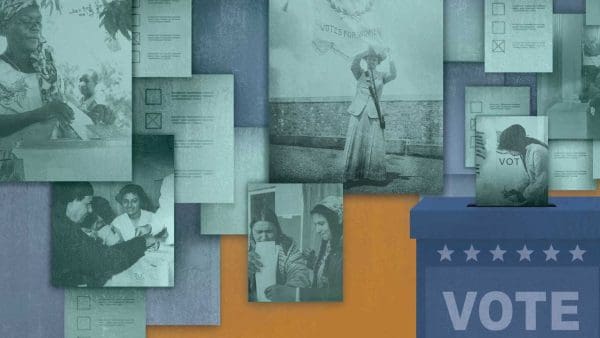Back in 2007, Lonni Sue Johnson was a successful artist and illustrator living in upstate New York. Her clever, whimsical illustrations had graced the covers of The New Yorker and had appeared on the Museum of Modern Art’s holiday cards, in children’s books, and in ads for AT&T and IBM. But by the year’s end, that life had disappeared.
An attack of viral encephalitis left 61‐year‐old Johnson with severe brain damage. A woman who’d enjoyed a vibrant professional life filled with colorful art was left with neither the memory of it nor the capacity to create it.
Her story is the centerpiece of Puzzles of the Brain: An Artist’s Journey through Amnesia, an exhibit at the Walters Art Museum in Baltimore, presented in partnership with the Krieger School’s Department of Cognitive Science. It runs through December 11.
Above, a drawing by Lonni Sue Johnson she made during her ongoing recovery.
Barbara Landau, the Dick and Lydia Todd Professor of Cognitive Science, has known Johnson for years; they grew up in the same area. When she learned of Johnson’s illness, Landau paid her a visit and confirmed that she indeed “had deep losses but also retained much of her original humor and creative abilities.”
Johns Hopkins and the Walters Art Museum had collaborated on a previous art and science exhibit, and a second was coming soon when Landau suggested the idea to Gary Vikan, director of the Walters.
Fortunately, Johnson’s “family had done an outstanding job of preserving all of her art, from both before her trauma and afterward,” says Landau, “and this created a situation through which—as scientists—we could probe her understanding of the world.”
Michael McCloskey, also a professor of cognitive science at Johns Hopkins, has been studying the effects of brain damage for 30 years but had not been involved in projects related to art until recently, when he taught a course called Mind, Brain, and Beauty, which looked at neuroscience research on art and music. Hearing about Johnson from Landau sparked his interest and led him to get involved in the Walters project.
McCloskey and Landau realized that the artist had suffered extensive brain damage that destroyed her hippocampus— an area important to memory and spatial navigation. It had affected other areas of her brain, too, such as the left temporal lobe, useful for language and perception. Immediately after her illness, she could not walk or write her name—or even hold a pencil. She had to relearn those basic motor skills.
“Vocabulary was one of the few types of knowledge remaining to [her] after her illness and gave her something to work with when she began putting pencil to paper,” McCloskey says.
“The real turning point,” says Landau, “came when a friend gave Lonni Sue a book of word‐search puzzles.” Johnson filled the books quickly, asking her mother for more. “Meanwhile, she just proceeded to invent her own lists of words and put them in matrices—and this was the onset of creating word puzzles that could then support her art.”
Those puzzles bridged the large memory gap to reconnect the artist with her creative past.
Take, for example, a New Yorker cover Johnson created more than 25 years ago, in December 1985. At first glance the cover seems to depict a brightly ornamented Christmas tree. A closer look, however, discloses a stream of gift‐carrying people in colorful coats, standing in a line of zig‐zagging green stanchions. The December after her illness, she had created a word puzzle. “Clothes that Hang Up in the Closet” is a grid‐filled hanger, letters in the squares spelling out words that fit the bill—“dress” and “vest”—and words that don’t—“tights” and “bra.” They are arranged across, down, and diagonally. Some connect like crosswords; some don’t. And all the words used are listed below, alphabetically.
While the first work was created with an intact memory, the second piece was not, yet it is distinctly of Johnson—the playful style of a woman who continues to draw on the visual pun and its multiple layers of meaning with a sophisticated humor. This is evident from the 12 pre‐trauma works and the 24 chronological post‐trauma pieces in the exhibit.
Landau says that Johnson is still severely amnesic, and not only for events that occurred before her illness. “For example, when asked to copy a moderately complex figure, she did a perfect copy with the model in front of her, but when asked to copy it 10 minutes later, after it had been withdrawn, she had no memory of having done a copy at all.”
Despite these impairments, Johnson’s vocabulary is extensive. “She is very talkative and highly engaged in creating her art,” which she works on every day, Landau says. She has even begun to remember a few significant life events.
What does it mean for treating brain damage in the future? Johnson’s case gives researchers a glimpse into the synergies between brain function and creativity. McCloskey says that we may eventually know enough to design precise programs for each individual’s recovery. Surely, he says, “the consistent support and encouragement of loved ones can make a big difference.” Johnson’s mother, artist Margaret Kennard Johnson, intervened daily in her daughter’s artistic recovery.
McCloskey adds: “One of the lessons for anyone who has suffered brain damage is that perseverance may pay off. Given our current incomplete state of knowledge about the brain, the specific type of … training may be less important than just working persistently toward recovery.” In less scientific terms: practice.





